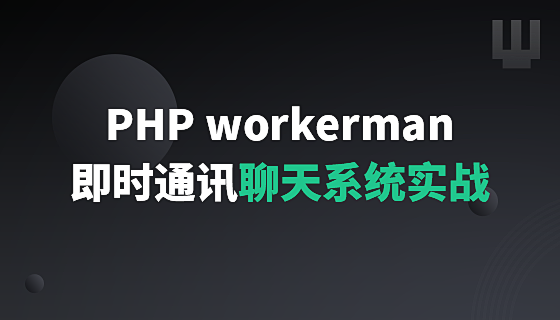ajax跨域、json及常用数组函数
1 ajax
相关概念解析:
(1)同步:前端发请求,必须等到后端响应完成,才允许发送另一个请求
异步:前端发请求后,不需等待后端响应结果继续执行,后端响应完成通过事件通知前端处理
(2)XMLHttpRequest对象
a:创建xhr对象:const xhr = new XMLHttpRequest();
b:配置xhr参数:xhr.open(type,url);
c:处理xhr响应:xhr.onload = () => {};
d:发送xhr请求:xhr.send();
(3)xhr对象常用属性
responseType:设置响应类型
response:响应正文
(4)xml对象常用方法
open(type,url):配置请求参数
send(data/null):发送请求,默认值是null
(5)xhr对象常用事件
load():请求成功
error():请求失败
1.1 get请求
代码前准备:
搭建hello服务器,个人用的是免费工具pupstudy,前端html与后端php在同一个目录文件
前端页面代码:
<button>ajax-get</button><p></p>//将script脚本写在前端页面里<script>const btn =document.querySelector("button");btn.onclick = () => {//严格按照xhr对象的四个步骤走//1 创建xhr对象const xhr = new XMLHttpRequest();//2 配置xhr参数,open(type:访问方式,url:访问目标地址),xhr.open("get","test1.php?id=2");xhr.responseType = "json";//3 处理xhr响应://成功xhr.onload = () => {console.log(xhr.response);//dom:将响应结果渲染到页面中let user = `${xhr.response.name}(${xhr.response.email})`;document.querySelector("p").innerHTML = user;};xhr.onerror = () => console.log("Error");};//4 发送xhr请求xhr.send(null);</script>
后端代码
//使用二维数组模拟用户数据表信息$users = [['id'=>1, 'name'=>'天蓬','email'=>'tp@php.cn','password' => md5('123456')],['id'=>2, 'name'=>'灭绝','email'=>'mj@php.cn','password' => md5('abc123')],['id'=>3, 'name'=>'西门','email'=>'xm@php.cn','password' => md5('abc888')],];// 查询条件$id = $_GET['id'];//在id组成的数组中查询是否存在指定的id,并返回对应的键名//array_column($users,'id')在users数据里面拿出id一列//array_search($id,array):在array数组中查找$id$key = array_search($id,array_column($users,'id'));//根据键名返回指定的用户信息echo json_encode($users[$key]);
完整代码的输出:
页面上一个value值为ajax-get的按钮,点击后,向后端传递id=2,后面在users数据中搜索id=2的数据,打到后返回正文显示:灭绝(mj@php.cn)
1.2 post请求
通常用于提交表单数据,前端html与后端php在同一个目录文件
FormData是表单数据构造器
(1)append(name,value):添加表单数据
(2)delete(name):删除表单数据
示范代码:
前端:
<div class="login"><h3>用户登录</h3><form action="" onsubmit="return false"><label for="email">邮箱:</label><input type="email" name="email" id="email" /><label for="password">密码:</label><input type="password" name="password" id="password" /><button>提交</button><span class="tips"></span></form></div>//将script脚本写在前端页面里//获取表单数据<script>const form = document.querySelector(".login form");const btn = document.querySelector(".login button");const tips = document.querySelector(".tips");btn.onclick = () => {//严格按照xhr对象的四个步骤走//1 创建xhr对象const xhr = new XMLHttpRequest();//2 配置xhr参数,open(type:访问方式,url:访问目标地址),以post方式,访问后端test2.phpxhr.open("post","test2.php");//3 处理xhr响应://成功xhr.onload = () => (tips.innerHTML = xhr.response);//4 发送xhr请求,需以表单的形式发送xhr.send(new FormData(form));</script>
后端代码:
//使用二维数组模拟用户数据表信息$users = [['id'=>1, 'name'=>'天蓬','email'=>'tp@php.cn','password' => md5('123456')],['id'=>2, 'name'=>'灭绝','email'=>'mj@php.cn','password' => md5('abc123')],['id'=>3, 'name'=>'西门','email'=>'xm@php.cn','password' => md5('abc888')],];//将通过post获取的数据保存到临时变量中$email = $_POST['email'];$password = md5($_POST['password']);//使用数组过滤中器查询是否存在指定的用户并返回结果//php中function ($user) use ($email,$password)是php中匿名函数闭包的写法,匿名函数需要使用到外部变量$res = array_filter($users,function($user) user ($email,$password){return $user['email'] === $email && $user['password'] === $password;});//将结果作为请求响应返回前端echo count($res) ===1 ? '验证成功' : '验证失败';
完整代码的输出:
页面上有一个表单输入框,提交后,下方提示输入内容,只有输出的邮箱和密码同时正确时,页面才会提示验证成功或者验证失败
1.3 跨域get请求
代码前准备:
创建两个服务器hello和world,前者存放前端代码,后者存放后端代码,个人用的是phpstudy。
前端服务器hello的前端代码:
<button>ajax-get-cors</button><p></p><script>//获取按钮对象const btn = document.querySelector("button");btn.onclick = () => {//1 创建xhr对象const xhr = new XMLHttpRequest();//2 配置xhr参数xhr.open("get","http://world.io/cors1.php");//3 处理xhr响应xhr.onload = () => {document.querySelector("p").innerHTML = xhr.response;};//4 发送xhr请求xhr.send(null);};</script>
后端服务器world的cors1.php处理代码:
// 浏览器默认关闭跨域访问,故需要在服务器端开启跨域许可// header('Access-Control-Allow-Origin: http://hello.io');// *: 任何来源header('Access-Control-Allow-Origin: *');echo 'CORS:跨域请求成功';
最终输出:页面上有一个ajax-get-cors的按钮,点击后,下方显示CORS:跨域请求成功
1.4 跨域post请求
前端服务器hello的页面代码:
<button>ajax-post-cors</button><p class="tips"></p><script>//获取按钮对象const btn = document.querySelector("button");const tips = document.querySelector(".tips");btn.onclick = () => {//1 创建xhr对象const xhr = new XMLHttpRequest();//2 配置xhr参数,opst方式访问cors2.php xhr.open("post","http://world.io/cors2.php");//3 处理xhr响应xhr.onload = () => (tips.innerHTML = xhr.response);//4 发送xhr请求let formData = new FormData();formData.append("email","admin@php.cn");formData.append("password","123456");xhr.send(formData);};</script>
后端服务器world的cors2.php代码:
header('Access-Control-Allow-Origin:*');//返回前端Post提交的数据print_r($_POST);
最终输出结果:前端页面上有个按钮”ajax-post-cors”,点击后页面提示:Array ( [email] => admin@php.cn [password] => 123456 )
表示跨域访问成功。
2 json
json是一种语法,用来序列化其它语言创建的数据类型
json独立于任何编程语言,几乎所有编程语言都提供了访问json数据的API接口
仅支持6种数据类型:对象、数组、数值、字符串、布尔值、null
json只是借用了JS中的一些数据表示语法,与js并无关系
注:json不支持undefined。因为除了js外,其他语言没有这个词
//json提供了两个方法://json.stringigy(data,replacer,space) :将JS对象,序列化为json字符串,下面代码会分别介绍三个参数的作用//json.parse():将json字符串,解析为js对象console.log(JSON.stringify(3.14),typeof JSON.stringify(3.14)); //输出3.14 stringconsole.log(JSON.stringify("php.cn"),typeof JSON.stringify("php.cn")); //输出"php.cn" stringconsole.log(JSON.stringify(true),typeof JSON.stringify(true)); //输出true stringconsole.log(JSON.stringify(null),typeof JSON.stringify(null)); //输出null stringconsole.log(JSON.stringify([1,2,3]),typeof JSON.stringify([1,2,3])); //输出[1,2,3] stringconsole.log(JSON.stringify({x:"a",y:"b"}),typeof JSON.stringify({x:"a",y:"b"})); //输出{"x":"a","y":"b"} string//json其实不是数据类型,只是一个具有特殊格式的字符串而已//对json格式字符串的特殊操作,主要通过后面二个参数//第二个参数支持数组 和 函数//数组console.log(JSON.stringify({x:"a",y:"b",z:"c"})); //输出{"x":"a","y":"b","z":"c"}console.log(JSON.stringify({x:"a",y:"b",z:"c"},[x,y])); //输出{"x":"a","y":"b"}//函数console.log(JSON.stringify({a:1,b:2,c:3},(k,v) =>{//将需要过滤的数据直接返回undefinedif(v<2) return undefined;//过滤掉值小于2的数据,即a:1,过滤之后,返回其它 >=2 的数据return v;}));//第三个参数,用来格式化输出json字符串console.log(JSON.stringify({a:1,b:2,c:3},null,2));//前面输出两个空格//输出://{// "a":1,// "b":2,// "c":3//}
3 常用数组函数
let arr = [1,2,3];//1 类似栈的方法arr.push(4,5);//进栈,返回5,修改后的数组长度arr.pop();//出栈,返回5,数组中索引最大的值,即最后进入数组的值//2 类似队列的方法arr.shift();//出队,返回1,即数组中第一项arr.unshift(4,5);//入队,返回修改后的数组长度// shift结合push,unshift结合pop可以实现像队列一样操作数组//3 join():与字符串split()相反,将数组转化为字符串返回let arr =["电脑","手机","相册"];console.log(arr.join());//返回:电脑,手机,相册console.log(arr.join("*"));//返回//4 concat()数组合并console.log([1,2,3].concat([4,5],[6,7 ]));//输出:[1,2,3,4,5,6,7]console.log([1,2,3].concat(123,["php",true],{x:1,y:2 }));//输出:[1,2,3,123,"php",true,{x:1,y:2}]//5 slice():返回数组中的成员arr = [1,2,3,4,5];let res = arr.slice(2,4);//返回 [3,4],即索引为2和3的值,如果只写一个,就直接取到原来数组末位。//6 splice(开始索引,删除的数量,插入的数据):数组的增删改操作,本质工作是删除数组元素,返回被删除的元素arr = [1,2,3,4,5];console.log(arr.splice(2));//如果只有一个参数,即是删除索引从2开始,后面所有的元素,返回值[3,4,5],此时arr:[1,2]arr = [1,2,3,4,5];console.log(arr.splice(2,2));//如果有两个参数,即是说明了删除的数量,返回[3,4],此时arr:[1,2,5]arr = [1,2,3,4,5];console.log(arr.splice(2,2,88,99));//三个或者三个以上,返回值依然是删除的元素[3,4],但插入了新的元素,arr:[1,2,88,99,5],//以上语句也可以写成 console.log(arr.splice(2,2,...[88,99])); 不能没有...//7 排序arr = ["a","c","b"];console.log(arr.sort());//按照字母的排列顺序,输出["a","b","c"]//如果数组元素是数字,排列是先转成字符串,然后按照左侧开始每一位的数字的顺序arr = [10,9,22,4];console.log(arr.sort());//输出:[10,22,4,9],因为左侧开始的第一位分别是1,2,4,9arr.sort((a,b) => a-b);//升序排列,如果后面改成b-a,就是降序排列console.log(arr);//此时arr就是按照升序排列//8 遍历maparr = [1,2,3,4,5];console.log(arr.foreach(item => console.log(item))); //逐行输出1,2,3,4,5,该没有返回值,如果我们需要赋值给某个变量,就不太方便let res = arr.map(item => item); //此时res就是遍历arr数组后得到的数组,由于map里面是item => item,所以res 和arr是两个一模一样的数组,但如果item => item*2,则res里面每个元素都是arr对应元素的两倍//9 过滤filter()arr = [1,2,3,4,5];console.log(arr.filter(item => item % 2));//item%2 为真,即item%2不为0,即是奇数//10 归内reduce(callback(prev,curr),base)arr = [1,2,3,4,5];console.log(arr.reduce((prev,curr) => {//逐行输出:1 2// 3 3// 6 4// 10 5console.log(prev,curr);return prev+curr;}); //最终输出 15 (数组求和)console.log(arr.reduce((prev,curr) => {return prev*curr;},2)); //最终返回值240,计算过程是:基础值2*1*2*3*4*5









